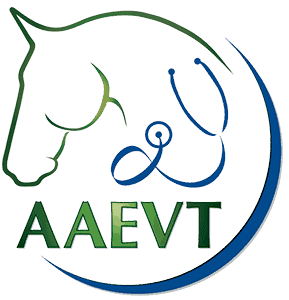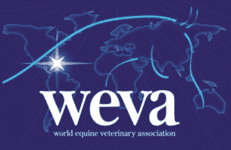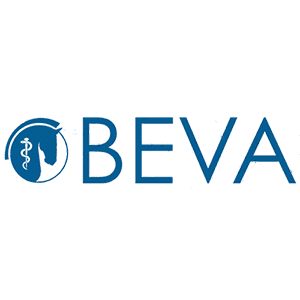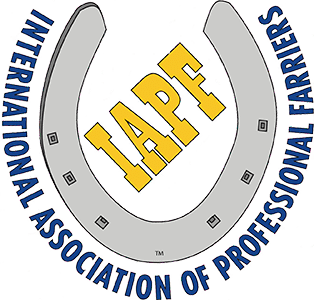By now you’re probably familiar with general equine biosecurity rules: Vaccinate your herd, isolate sick horses, disinfect tack and equipment between uses. But not all disease prevention practices are made equal. How you protect your field of retirees or your breeding stallion from disease differs from what you do when you haul your riding horse to a combined event. Three veterinarians passionate about preventing infectious disease spread among horses have shared their best biosecurity suggestions for three scenarios: on the farm, at a horse show, and in the breeding shed. With each instance, we’ll show you exactly what good biosecurity for horses looks like.
On the Farm
Dr. Stephanie Brault recently helped the American Association of Equine Practitioners develop and revise its biosecurity guidelines. Here are her tips for smart everyday biosecurity on the farm.
DVM, PhD, Dipl. ACVIM

Dr. Brault is a postdoctoral fellow in veterinary epidemiology and house officer in infection control and biosecurity at Colorado State University’s Veterinary Teaching Hospital, in Fort Collins.
| DOkeep horses in segregated groups of the same use or life stage. For example, horses that travel off the premises frequently for shows should be kept separately from nontraveling resident horses or broodmares, says Brault.
| DON’T let horses touch noses in the barn or over fencelines. However, if horses are residents, segregated into use groups, and have not been off the property, this step isn’t usually necessary, says Brault.

CREDIT: iStock
| DON’T allow horses to share water sources.
| DON’T share grooming supplies, tack (such as bits), and equipment.
| DOwash hands between handling horses, if possible. Again, if your home herd hasn’t been off the property, this might not be needed, says Brault.

CREDIT: The Horse staff
| DO ensure your horse gets all core and risk-based vaccines.
Click to View .PDF
| DO know how to take your horse’s temperature and what his baseline is.
| DO ask farriers, trainers, veterinarians, and visitors to wash their hands before entering the barn.
| DO wash and dry saddle cloths, towels, bandages, halter fleeces, and wipe rags between uses.

CREDIT: The Horse staff
| DON’T use multiple-dose medications (oral pastes, ophthalmic ointments, topicals) on multiple horses.
| DO institute rodent, bird, and insect control practices.

CREDIT: The Horse staff
| DO have on hand contact info for your State Department of Agriculture Veterinarian, USDA Area-Veterinarian-In-Charge, and area practicing veterinarians in case of an outbreak.
| DON’T allow horses onto the property without a health certificate and Coggins, plus proof of required vaccinations. Isolate new arrivals from resident horses for at least two weeks, and monitor them for signs of illness, checking temperatures twice daily, Brault says.

CREDIT: Kevin Thompson / The Horse
| DO monitor horses that travel off the premises for signs of illness for two weeks after their return—again, checking temperatures twice daily. Try to handle these horses last each chore session (after the nontraveling resident horses) in case they are incubating an illness, and wash your hands after contacting them, she says.
| DO isolate sick or febrile horses immediately and call the veterinarian.
At Horse Shows
Dr. Katie Flynn has done extensive work monitoring and communicating about infectious disease outbreaks and helped create the Biosecurity Toolkit for Equine Events. Here are her disease prevention suggestions for before, during, and after going to a horse show.
BVMS, MRCVS

Dr. Flynn is an equine staff veterinarian with the California Department of Food and Agriculture, in Sacramento.
| DON’T travel with sick horses; only take healthy horses to shows or events. This means no animals with fevers, nasal discharge, or abnormal feces get on the trailer, says Flynn.
| DO consult your veterinarian to ensure your horse is current on vaccinations before you hit the road.
| DO travel with a current negative Coggins test, health certificate, and proof of required vaccination for all horses.
| DO disinfect show stalls upon arrival at the facility and before moving your horse in, if possible.
| DON’T let horses touch noses.
| DON’T share communal water sources.
| DON’T allow the hose to touch bucket surfaces when filling buckets.

CREDIT: The Horse staff
| DON’T submerge the hose in water buckets while filling them.
| DON’T share grooming supplies and tack (such as bits) unless cleaned and disinfected between uses.

CREDIT: The Horse staff
| DO disinfect equipment (lead shanks, lip chains, bits/bridles, twitches, thermometers, grooming supplies, etc.) between horses, if you must share.
| DON’T share cleaning equipment such as wheelbarrows and stall mucking tools.

CREDIT: The Horse staff
| DON’T share nose rags or towels.
| DO ask people to wash hands or use hand sanitizer before handling your horse.
| DO wash your hands or use hand sanitizer between handling or riding other people’s horses.
| DO take horses’ temperatures twice daily while at the show and know each one’s baseline.
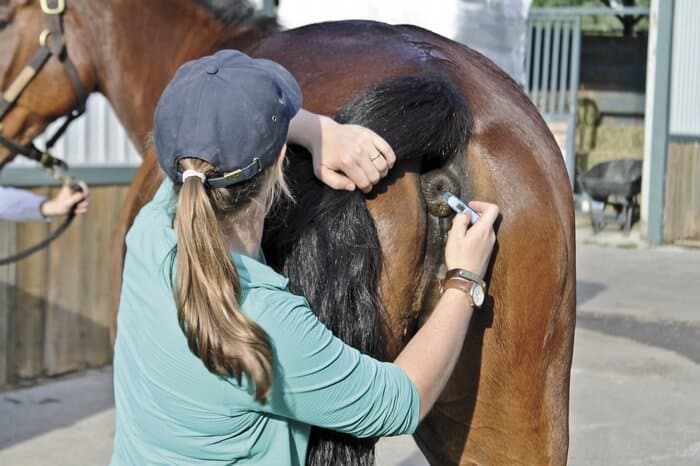
CREDIT: The Horse staff
| DON’T share needles or syringes, and dispose of them properly in designated medical waste containers.

CREDIT: The Horse staff
| DO secure feed in a vector-proof container (to keep out mice, etc.) at the show.
| DO store feed and hay off the ground and away from the elements.
| DO use mosquito repellents during mosquito season.
| DO restrict dogs from stabling areas.
| DON’T take unused hay or shavings back home with you from the show grounds once an event is over, Flynn says. It could be harboring pathogens.
| DO isolate horses from the rest of the herd (ideally, for two weeks) upon returning from a show.
| DO clean and disinfect all tack and equipment used at the show.

CREDIT: The Horse staff
| DO clean and disinfect horse trailers between uses.
In the Breeding Shed
Dr. Reed Holyoak is a professor whose research centers around venereal equine infectious diseases such as equine viral arteritis. Here are his suggestions for disease prevention in the breeding shed.
DVM, PhD, Dipl. ACT

Dr. Holyoak is the Bullock Equine Reproduction Endowed Professor and Head of the Veterinary Clinical Sciences Department at Oklahoma State University, in Stillwater.
| DO require mandatory negative Coggins for all incoming horses.
| DO require testing for venereal diseases such as EVA and contagious equine metritis, and have all horses arrive with a current vaccination status of major pathogens of concern, says Holyoak.
| DO isolate new arrivals for at least seven but ideally 14 days to prevent contact with resident horses (especially pregnant mares).
| DO make sure all personnel understand and follow biosecurity measures.
| DO wear barriers such as disposable gloves and protective clothing.

CREDIT: The Horse staff
| DO wear disposable gloves when opening a shipping container and handling packages of shipped semen.
| DON’T let horses touch noses.
| DO wash hands after each procedure, between handling horses, and before leaving the breeding shed.
| DO use sterile disposable equipment for insemination and discard it promptly and properly after use.
| DO disinfect all semen collection/processing/insemination equipment between horses. Clean the artificial vagina and its cover promptly after collection, rather than leaving it on a countertop or in a sink, says Holyoak.

CREDIT: The Horse staff
| DO use separate, dedicated equipment such as halters, lead ropes, and blankets for each horse.
| DO cover a breeding roll during a live cover breeding with a disposable plastic sleeve and change this sleeve between horses.

CREDIT: The Horse staff
| DO apply a disposable plastic cover to the breeding phantom before each use, and disinfect the phantom between uses. Avoid difficult-to-disinfect cover materials, such as fleece, says Holyoak.

CREDIT: The Horse staff
| DO disinfect a twitch, if used to restrain a mare during a live cover, prior to use on another horse.
| DO clean and disinfect all facilities used to handle and breed mares after each breeding session, as well as the stocks and the shed itself, if possible.
Take-Home Message
The risk of disease spread between horses differs depending on where you are and what you’re doing. Keep these distinctions in mind, and always practice smart biosecurity, no matter the scenario.
Credits:
 Alexandra Beckstett
Alexandra Beckstett
Alexandra Beckstett is the managing editor of The Horse. She’s a lifelong hunter/jumper rider and lives in Lexington, Kentucky.
Editor-in-Chief: Stephanie L. Church
Digital Editor: Michelle Anderson
Editorial Team: Alexandra Beckstett, Erica Larson
Art Director: Brian Turner
Web Producer: Jennifer Whittle
Publisher: Marla Bickel

